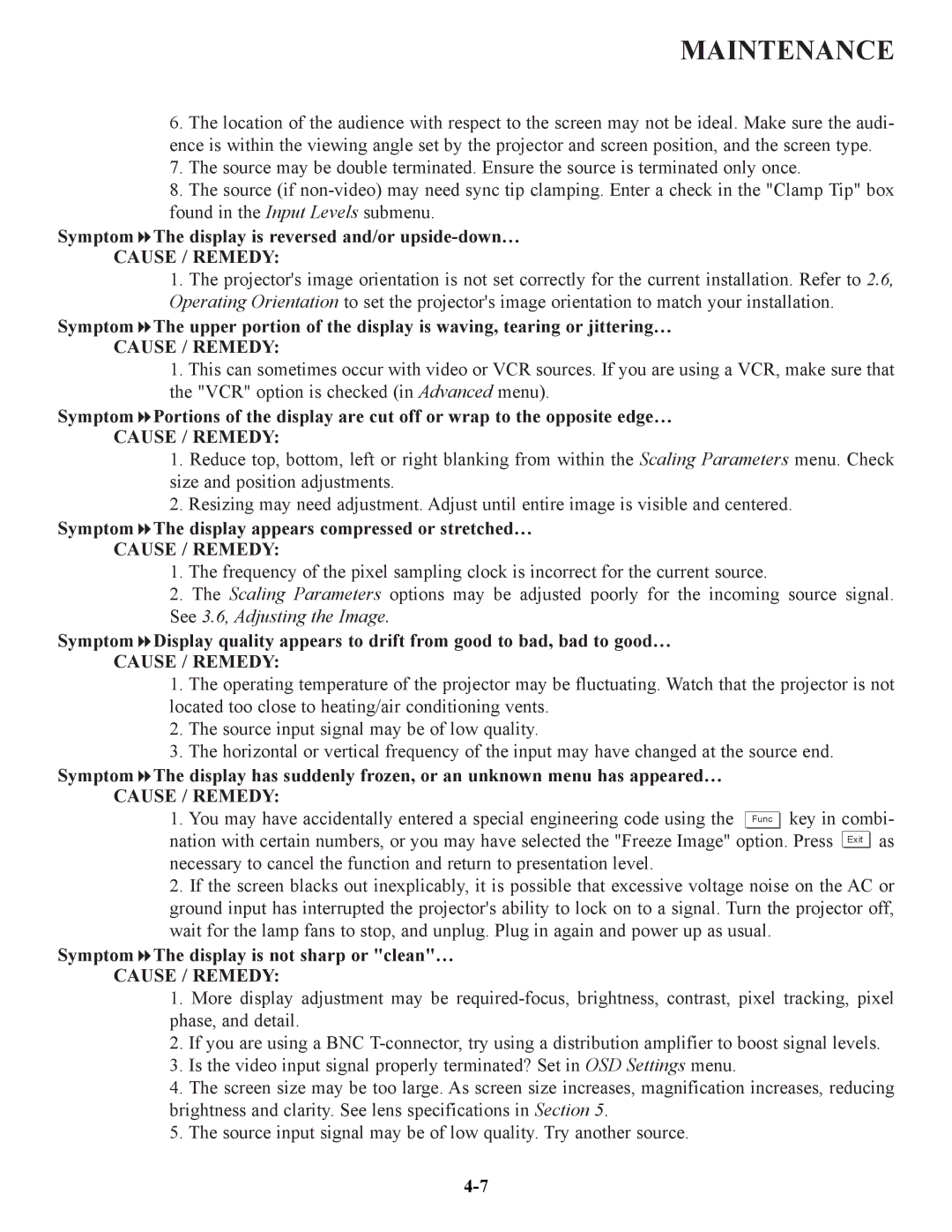MAINTENANCE
6.The location of the audience with respect to the screen may not be ideal. Make sure the audi- ence is within the viewing angle set by the projector and screen position, and the screen type.
7.The source may be double terminated. Ensure the source is terminated only once.
8.The source (if
Symptom The display is reversed and/or upside-down…
CAUSE / REMEDY:
1.The projector's image orientation is not set correctly for the current installation. Refer to 2.6, Operating Orientation to set the projector's image orientation to match your installation.
Symptom The upper portion of the display is waving, tearing or jittering…
CAUSE / REMEDY:
1.This can sometimes occur with video or VCR sources. If you are using a VCR, make sure that the "VCR" option is checked (in Advanced menu).
Symptom Portions of the display are cut off or wrap to the opposite edge…
CAUSE / REMEDY:
1.Reduce top, bottom, left or right blanking from within the Scaling Parameters menu. Check size and position adjustments.
2.Resizing may need adjustment. Adjust until entire image is visible and centered.
Symptom The display appears compressed or stretched…
CAUSE / REMEDY:
1.The frequency of the pixel sampling clock is incorrect for the current source.
2.The Scaling Parameters options may be adjusted poorly for the incoming source signal. See 3.6, Adjusting the Image.
Symptom Display quality appears to drift from good to bad, bad to good…
CAUSE / REMEDY:
1.The operating temperature of the projector may be fluctuating. Watch that the projector is not located too close to heating/air conditioning vents.
2.The source input signal may be of low quality.
3.The horizontal or vertical frequency of the input may have changed at the source end.
Symptom The display has suddenly frozen, or an unknown menu has appeared…
CAUSE / REMEDY:
1. You may have accidentally entered a special engineering code using the Func ![]()
![]() key in combi- nation with certain numbers, or you may have selected the "Freeze Image" option. Press Exit
key in combi- nation with certain numbers, or you may have selected the "Freeze Image" option. Press Exit ![]()
![]() as necessary to cancel the function and return to presentation level.
as necessary to cancel the function and return to presentation level.
2.If the screen blacks out inexplicably, it is possible that excessive voltage noise on the AC or ground input has interrupted the projector's ability to lock on to a signal. Turn the projector off, wait for the lamp fans to stop, and unplug. Plug in again and power up as usual.
Symptom The display is not sharp or "clean"…
CAUSE / REMEDY:
1.More display adjustment may be
2.If you are using a BNC
3.Is the video input signal properly terminated? Set in OSD Settings menu.
4.The screen size may be too large. As screen size increases, magnification increases, reducing brightness and clarity. See lens specifications in Section 5.
5.The source input signal may be of low quality. Try another source.
